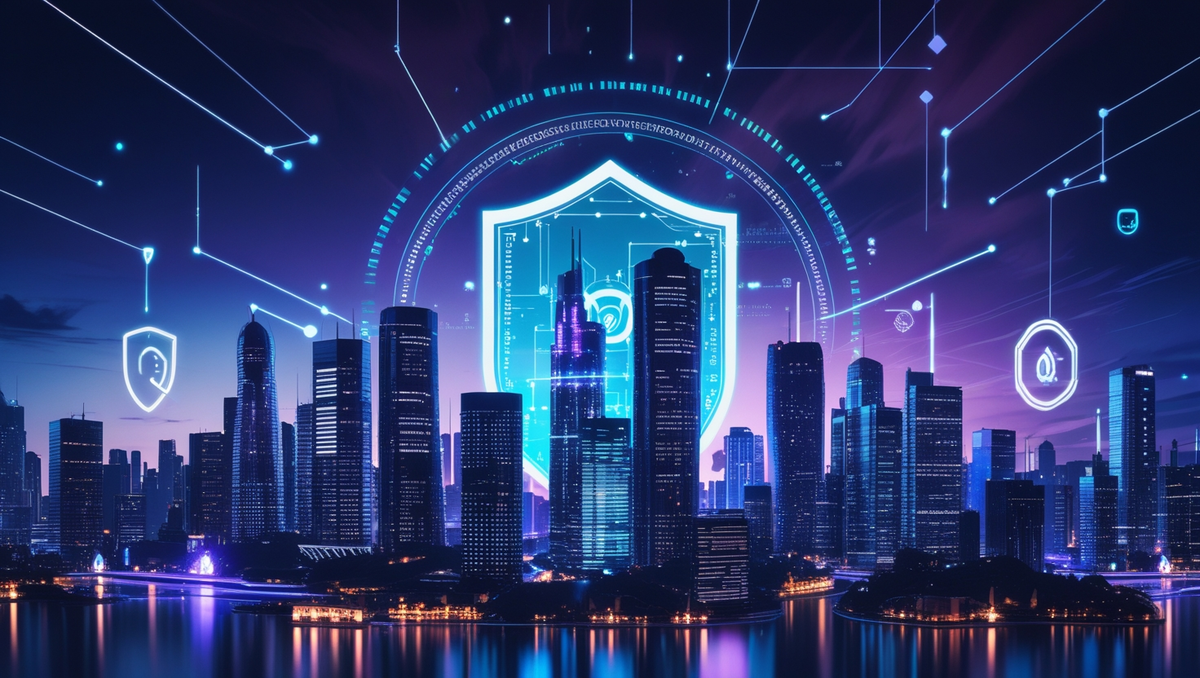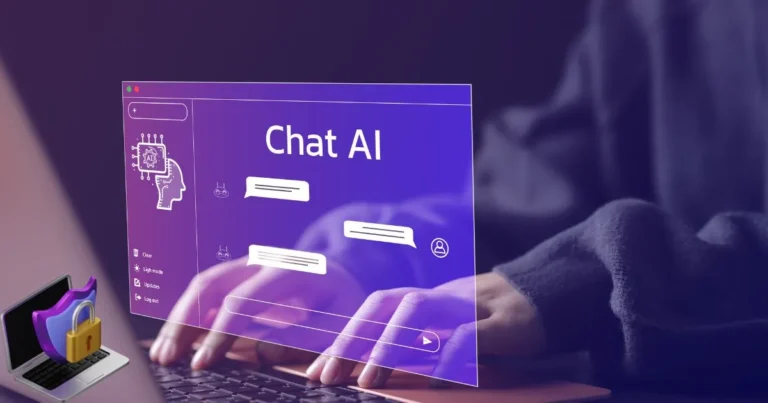The Future of Cybersecurity: Staying Ahead in a Post-Quantum World
The future of cybersecurity is already here—and it’s not waiting for you to catch up.
The world is entering a new digital frontier, where technological breakthroughs bring both innovation and vulnerability. From quantum computing to AI-driven threats, the cybersecurity landscape is evolving faster than ever. Traditional security protocols like RSA and ECC, once considered nearly impenetrable, are now at risk of becoming obsolete due to the exponential rise of quantum computing.
So, what does this mean for your organization?
It means the time to future-proof your cybersecurity strategy is now. Not tomorrow. Not when the breach happens. But today—before emerging threats become real-world crises.
In this article, we’ll explore the key trends shaping the future of cybersecurity, the challenges and opportunities posed by quantum computing, and the practical steps organizations can take to stay ahead of the curve.
Table of Contents
A New Cybersecurity Horizon Is Emerging
1. The Future of Cybersecurity: Quantum Computing Threats
Why Quantum Computing Is a Game-Changer
Quantum computers leverage the power of qubits to solve problems that would take classical computers thousands of years. While this has great potential for science, logistics, and healthcare, it also opens the door to breaking existing encryption algorithms—especially public key cryptography like RSA and ECC.
What’s at risk?
- Secure online banking
- Confidential communications
- Digital signatures
- Blockchain systems
- Cloud security
In short: the backbone of digital trust is under threat.
What Is Post-Quantum Cryptography (PQC)?
Post-quantum cryptography refers to algorithms designed to be secure against both classical and quantum computers. NIST (National Institute of Standards and Technology) is in the process of standardizing PQC algorithms, and companies like Google, IBM, and Microsoft are already testing implementations.
If your organization still relies heavily on RSA, now is the time to begin transitioning to quantum-resistant protocols.
2. Proactive Measures: How Organizations Can Stay Ahead
Being reactive is no longer an option in cybersecurity. The best organizations stay ahead of future threats by being proactive.
a. Invest in Emerging Technologies
Adopting technologies like:
- Zero Trust Architecture
- AI-based threat detection
- Blockchain for secure transactions
- Quantum-resistant cryptography
…can give your cybersecurity a fighting chance.
b. Implement Adaptive Security Policies
Cybersecurity frameworks should not be static. Instead, they must adapt in real-time based on risk assessment, threat intelligence, and compliance requirements.
Adaptive policies include:
- Dynamic access control
- Regular vulnerability scans
- Behavior-based authentication
- Incident response playbooks
c. Collaborate with Threat Intelligence Networks
No organization can fight the cyber war alone.
Partnering with global threat intelligence networks helps:
- Share insights on new attack vectors
- Learn from peers in your industry
- Improve real-time threat detection
Think of it as crowdsourcing your cybersecurity knowledge.
d. Constant Evolution of Cybersecurity Frameworks
Frameworks like NIST, ISO/IEC 27001, and CIS Controls should be seen as living documents. Update them regularly to account for:
- New technologies
- Regulatory changes
- Emerging threat patterns
3. Human Error: The Weakest Link
Cybersecurity Awareness: Why Training Is Key for the Future
Despite all the technology at our disposal, humans remain the easiest point of attack.
Phishing emails, weak passwords, accidental data leaks—these are still responsible for over 85% of security breaches, according to multiple industry reports.
What You Can Do
- Conduct regular cybersecurity training
- Simulate phishing attacks to test awareness
- Promote a culture of security-first thinking
- Reward good security hygiene across the organization
Remember: your employees can be your first line of defense—or your biggest vulnerability.
4. The Rise of AI and Machine Learning in Cybersecurity
AI isn’t just a buzzword. It’s already transforming cybersecurity in meaningful ways.
Benefits of AI in Security
- Real-time threat detection
- Behavioral analysis of users and systems
- Automated incident response
- Predictive analytics for risk management
But beware: Attackers also use AI. From deepfake phishing attempts to automated password cracking, cybercriminals are not lagging behind.
This creates an AI arms race, where the side with better algorithms often wins.
5. Top Cybersecurity Trends Shaping the Future
Let’s break down the top cybersecurity trends shaping the future:
a. Cybersecurity Mesh Architecture (CSMA)
A distributed approach that creates a flexible, modular security architecture—ideal for hybrid and multi-cloud environments.
b. Secure Access Service Edge (SASE)
SASE combines network security and WAN capabilities into a single cloud-based service model—perfect for remote and distributed teams.
c. Digital Supply Chain Security
With rising attacks targeting third-party vendors, supply chain security is now a board-level concern. Vetting your partners and monitoring their security hygiene is critical.
d. Privacy-Enhancing Computation
These techniques allow data to be processed and analyzed without exposing it—vital for GDPR, HIPAA, and other privacy regulations.
6. Building a Resilient Cybersecurity Culture
Security is not just an IT issue; it’s a business priority.
To future-proof your organization:
- Involve executives in security decisions
- Embed cybersecurity in product development
- Set clear accountability at every level
- Conduct regular red-team/blue-team exercises
A resilient culture empowers your entire team to spot and prevent threats—before they escalate.
7. Regulatory Pressures in the Future of Cybersecurity
From GDPR in Europe to CCPA in California and China’s Personal Information Protection Law (PIPL), compliance is no longer optional.
Non-compliance risks include:
- Heavy fines
- Legal liabilities
- Brand reputation damage
Future-proofing your cybersecurity means aligning your strategy with current and upcoming regulations.
Final Thoughts: Prepare Today for the Threats of Tomorrow
The future of cybersecurity is both exciting and daunting. We are on the cusp of breakthroughs in computing, connectivity, and artificial intelligence—but each advancement brings new risks.
Public key encryption may soon be a relic of the past, and post-quantum cryptography will be our new line of defense. But even the strongest algorithm won’t protect against a careless employee or an unpatched vulnerability.
The organizations that thrive will be those that:
✅ Invest in innovation
✅ Adapt their frameworks
✅ Train their people
✅ Build partnerships
✅ Think long-term
Don’t wait until it’s too late. Start building your future-ready cybersecurity strategy today.
FAQs About the Future of Cybersecurity
Q: When will quantum computing be a real threat to current encryption?
A: Experts estimate 5–15 years, but proactive transition to PQC is already underway.
Q: Are small businesses also at risk from these advanced threats?
A: Absolutely. Small and medium enterprises are often easier targets due to fewer resources.
Q: Can AI really defend against cyberattacks?
A: Yes, especially in detecting anomalies and automating responses, but it’s not a silver bullet.
Q: What’s the first step to future-proof cybersecurity?
A: Begin with a risk assessment, followed by employee training and an evaluation of your current encryption methods.





